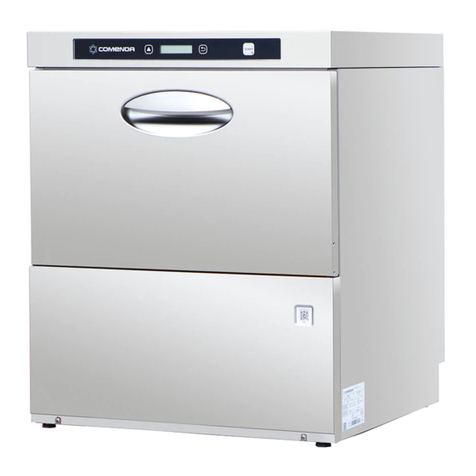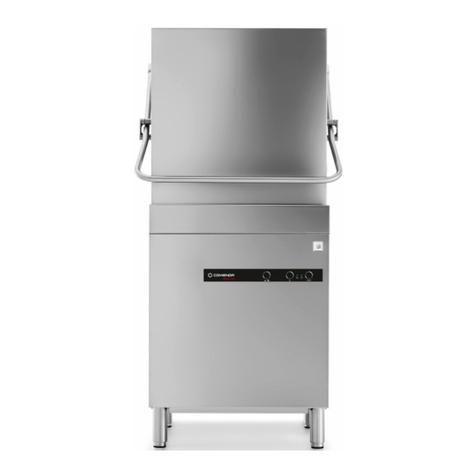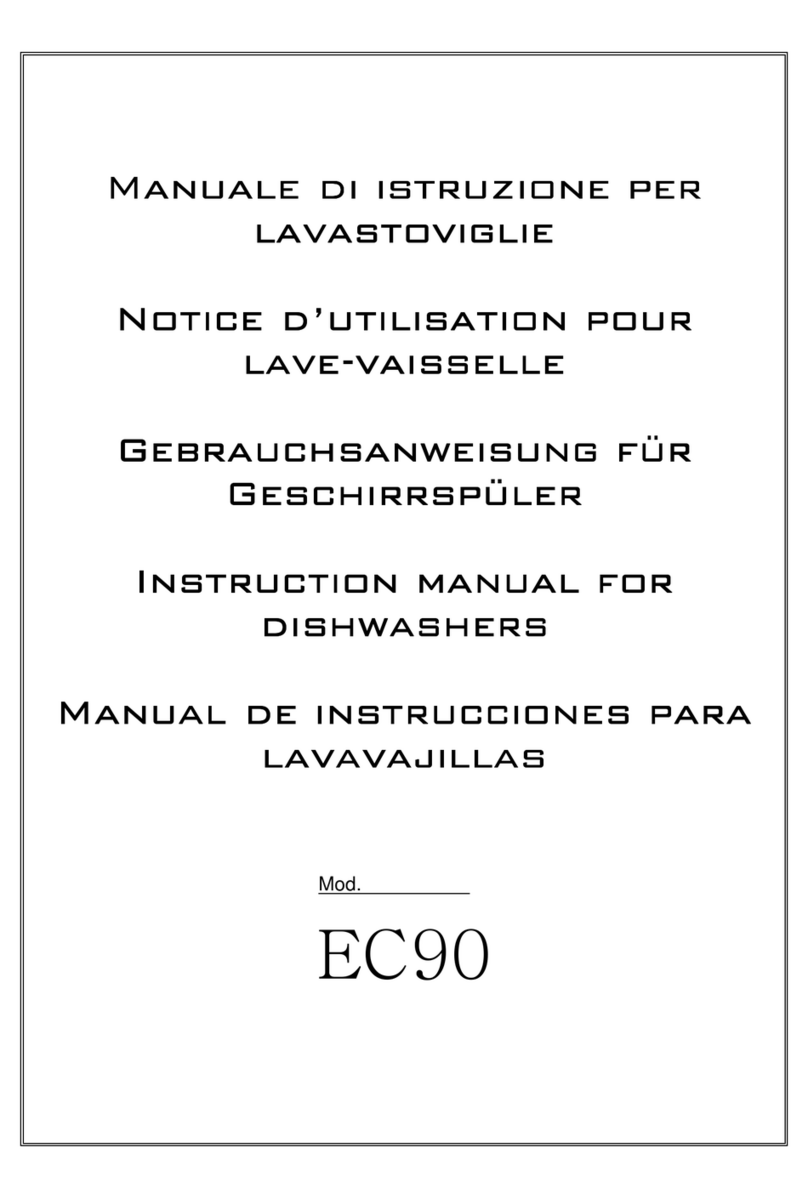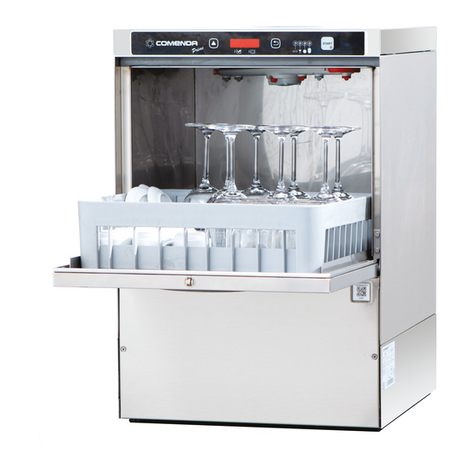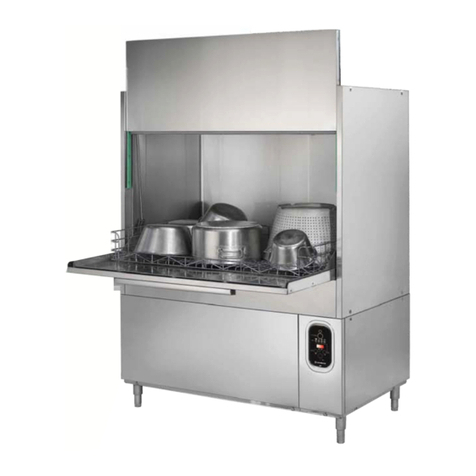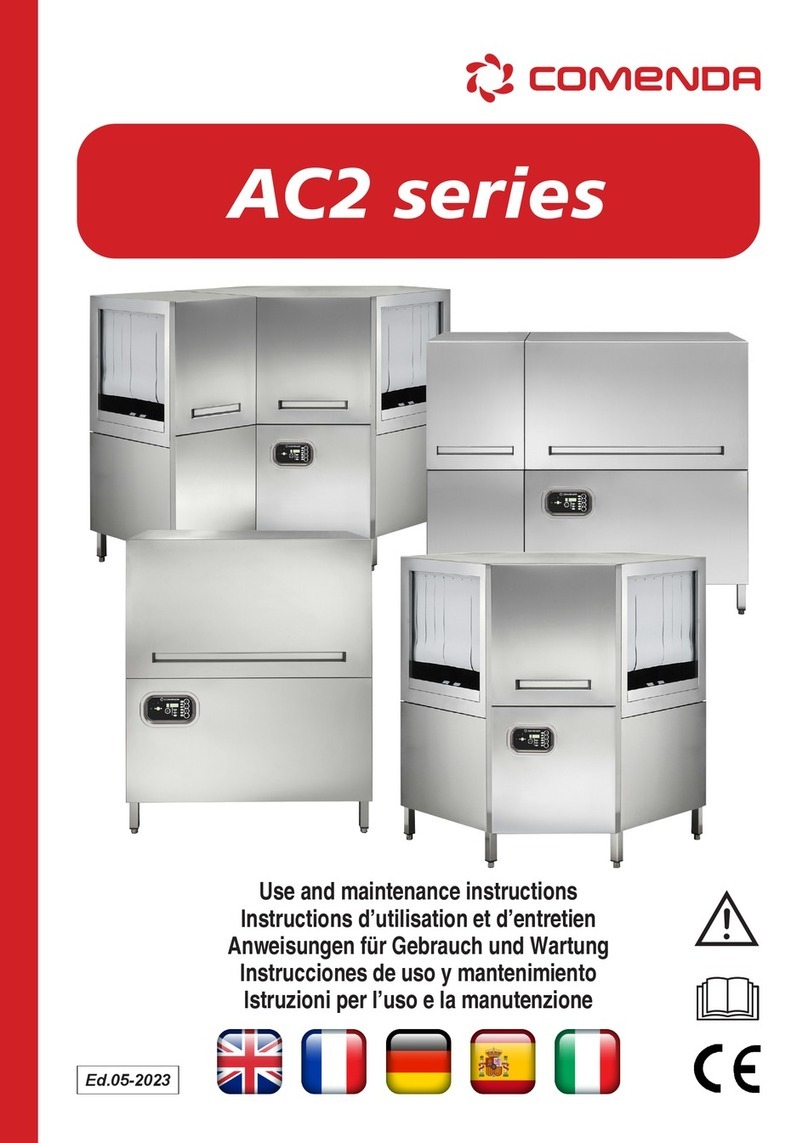INSTRUCTIONS FOR THE USER
30
USEFUL ADVICE
1) MAINTANANCE: Before beginning any cleaning or maintanance
operation, the machine MUST be disconnected from the main power supply.
Frequently check and clean the blades, taking them out from the column to
remove any debris or crustation.
The frequency of this operation is suggested by the quantity of residue or by
non-satisfactory results from washing.
For internal and external cleaning of the machine, do not use corrosive
products such as sodium hypochlorite (bleach) or hydrochloric acid (muriatic
acid), steel wool or steel brushes.
So as not to interfere with the correct functioning of the machine, in the
presence of calcium salts or magnesium in the water you are advised to
periodically de-encrust and keep in good order by using personnel
professionally qualified.
So as to avoid risk of damage from oxidization or corrosion from chemicals,
keep all steel surfaces well clean.
2) FOR BEST RESULTS: An insufficient wash cycle may occur which is
visible when traces of waste remain. Streaking may be caused when the rinse
cycle is insufficient, in which case check that the rinse nozzles are clean and
that the water source is of suitable pressure.
In case of waste remains check that:
-the wash cycle nozzles are clean.
-the wash cycle temperature is at 55°C.
-the detergent is chlorified, of the correct concentration and specifically for
industrial use.
-the suction pump filter is clean
-the dishes are in the correct rack
-the dishes are placed correctly in the rack
3) PROLONGED DISUSE
In case of prolonged disuse, a few weeks, it is advisable to run the machine
empty a few times with clean water so as to avoid the build up of any odors.
If necessary repeat this operation a few times until the the water at the end of
the wash is good and clean.
If the period of disuse is longer, it is advisable to oil stainless steel surfaces
with vaseline and to remove any water from the boiler and the electric pump.
It is always advisable to run the sanitizing and de-encrustation operations
both before and after periods of disuse.
